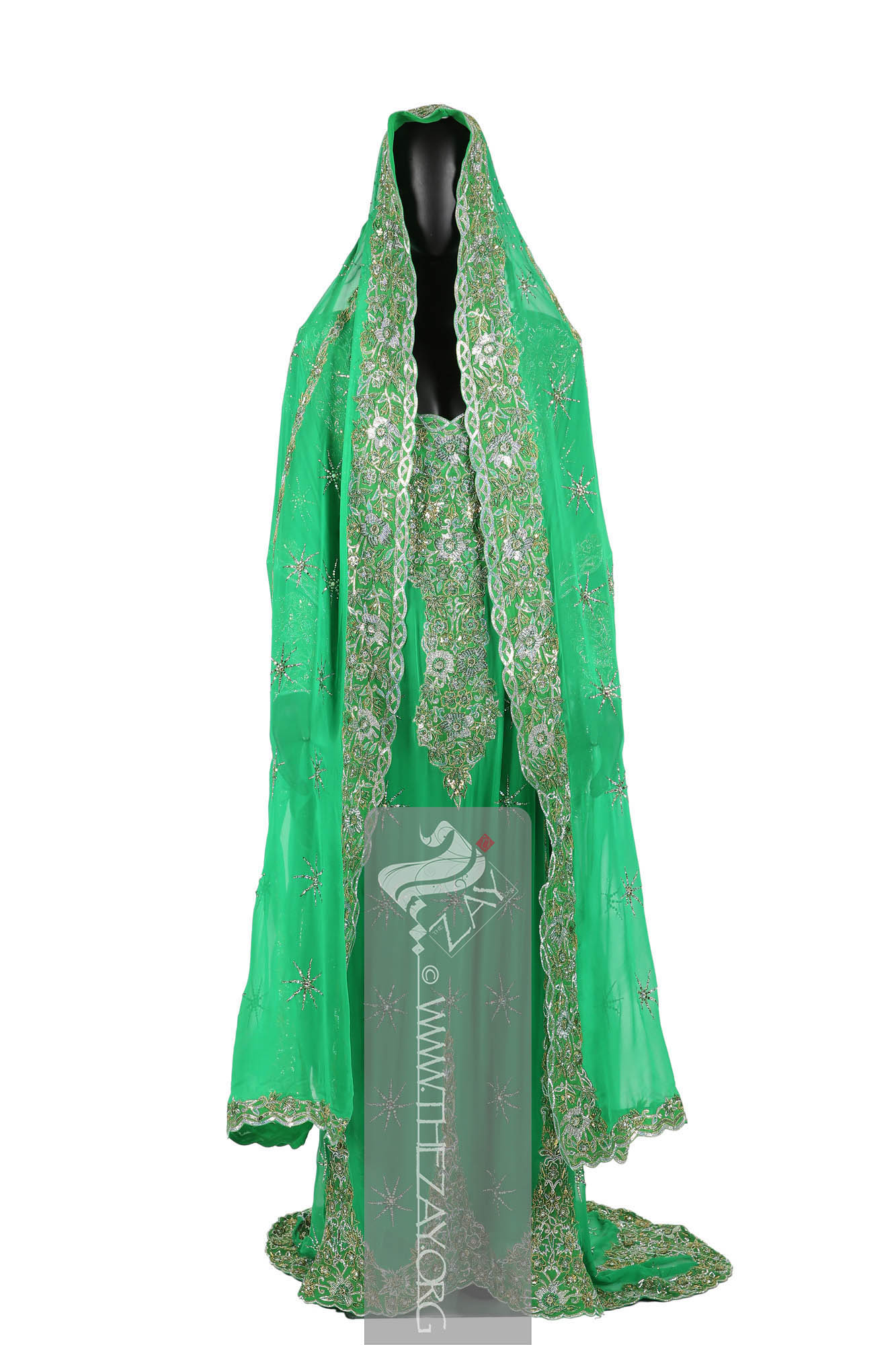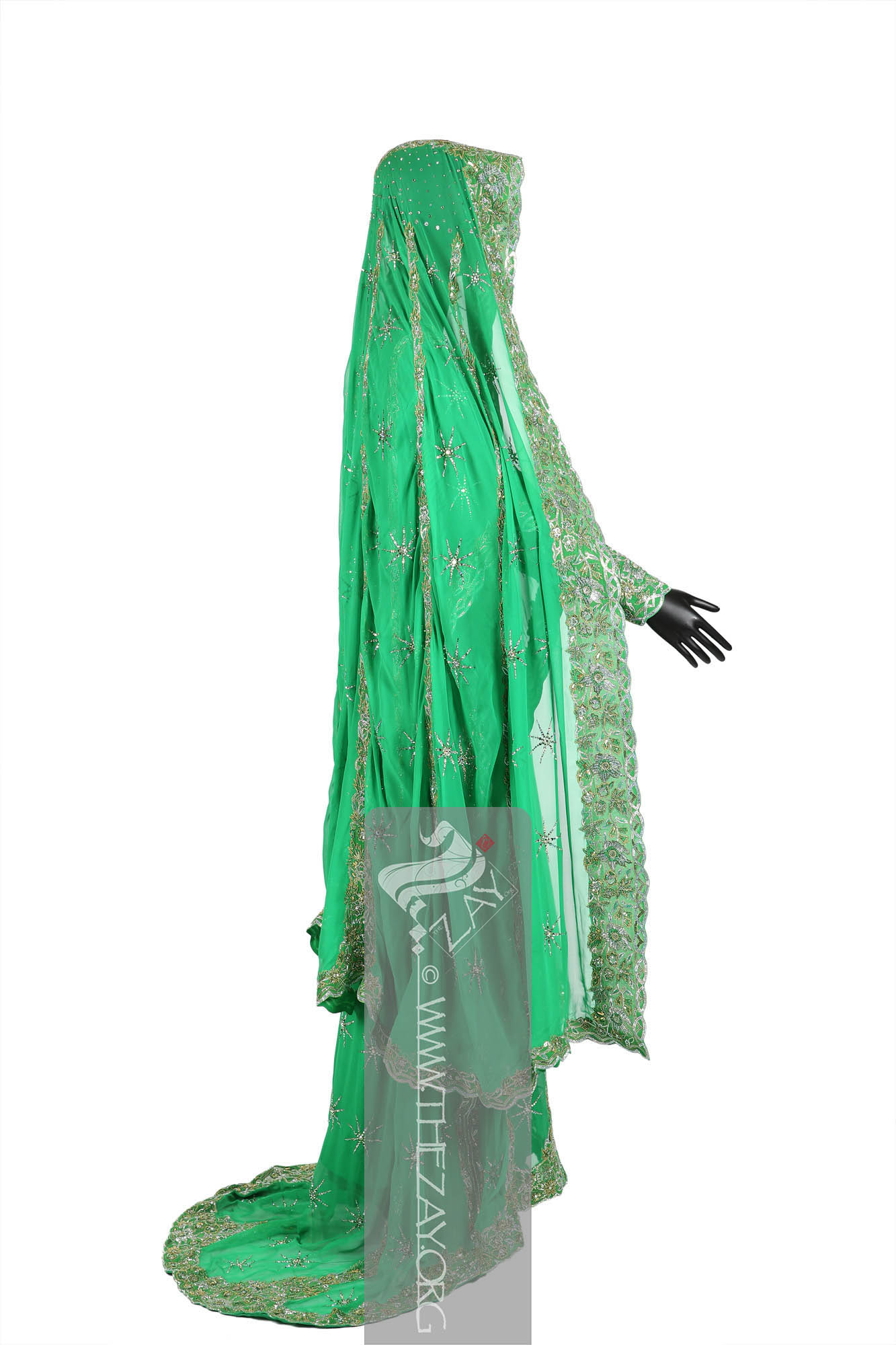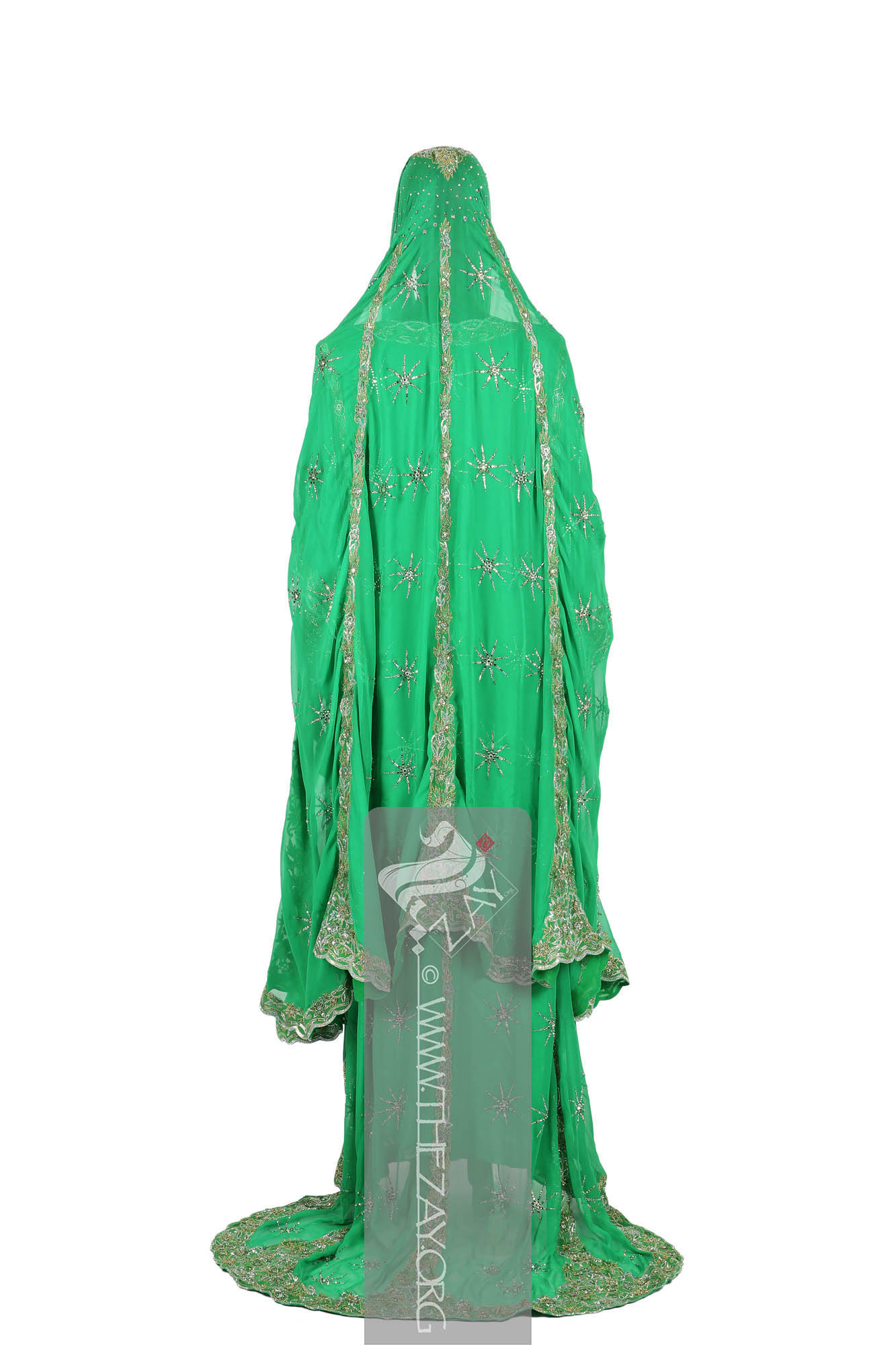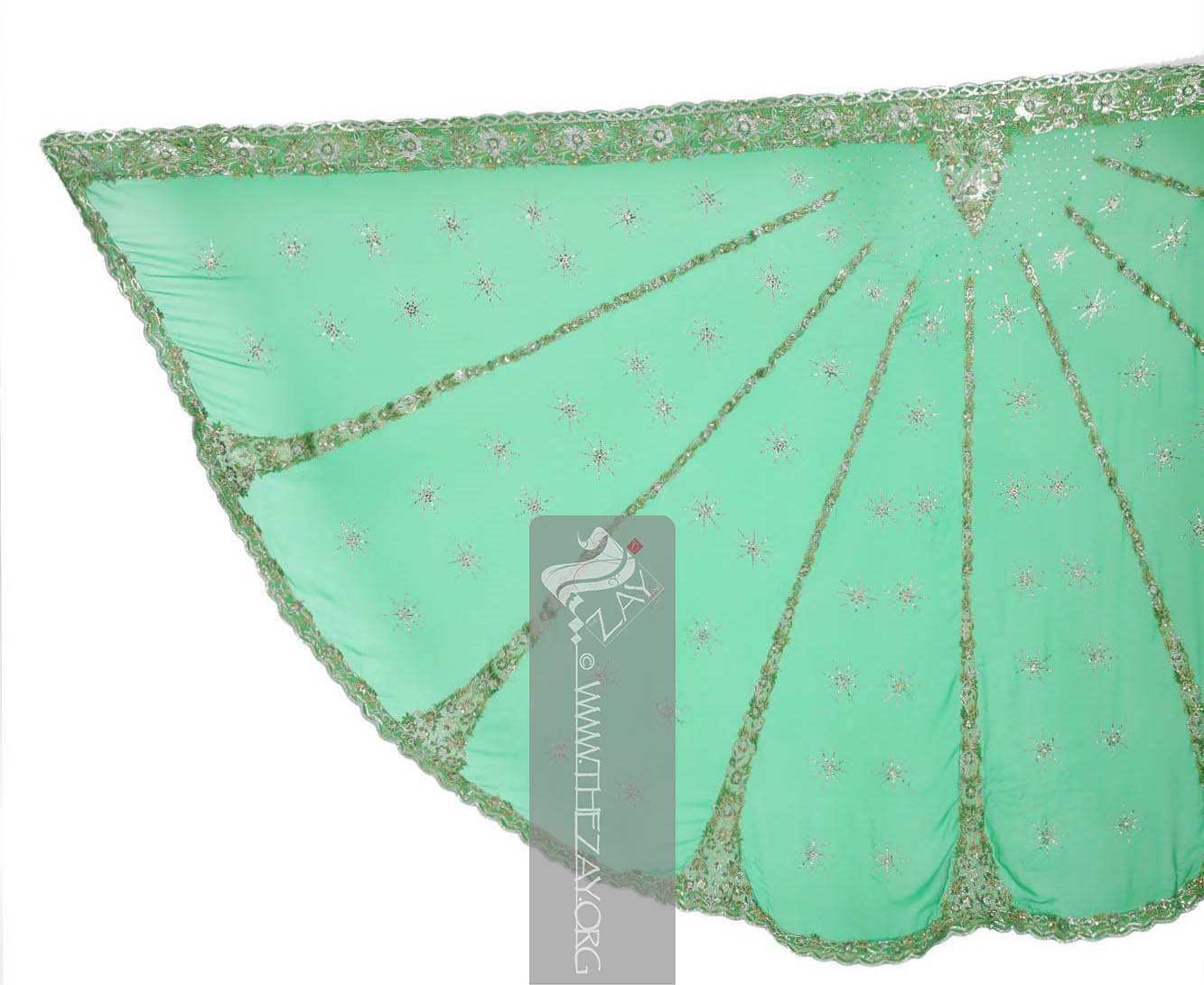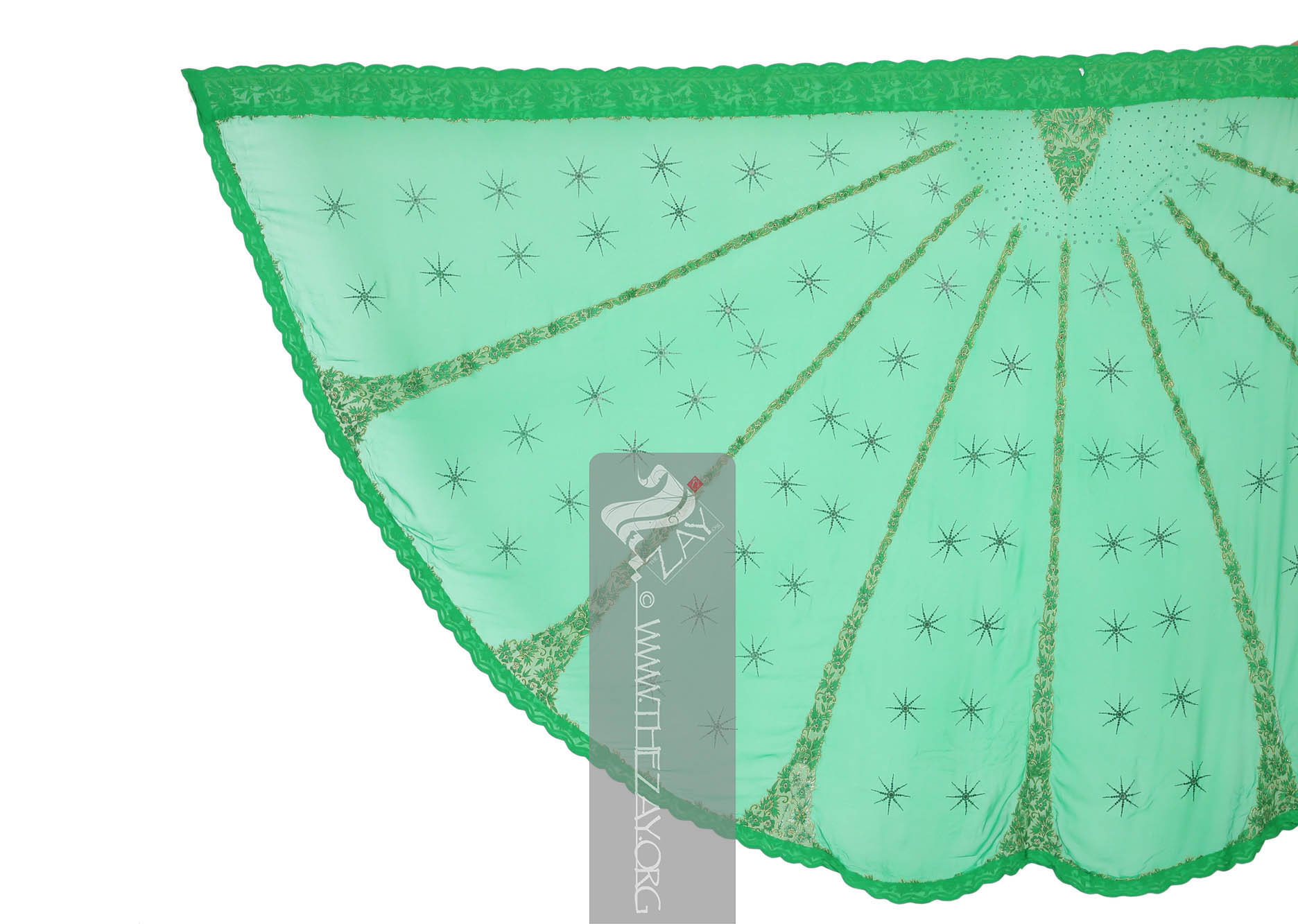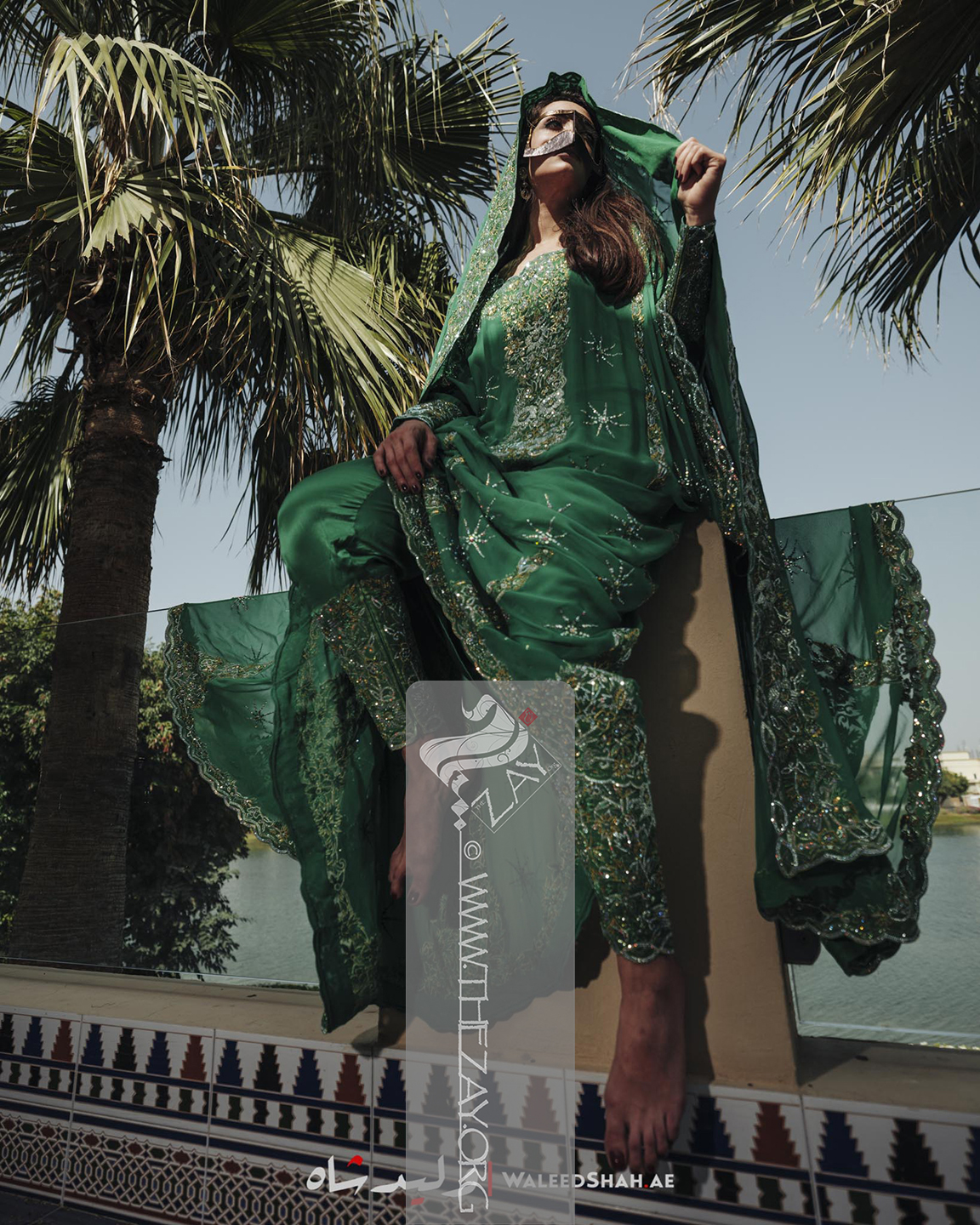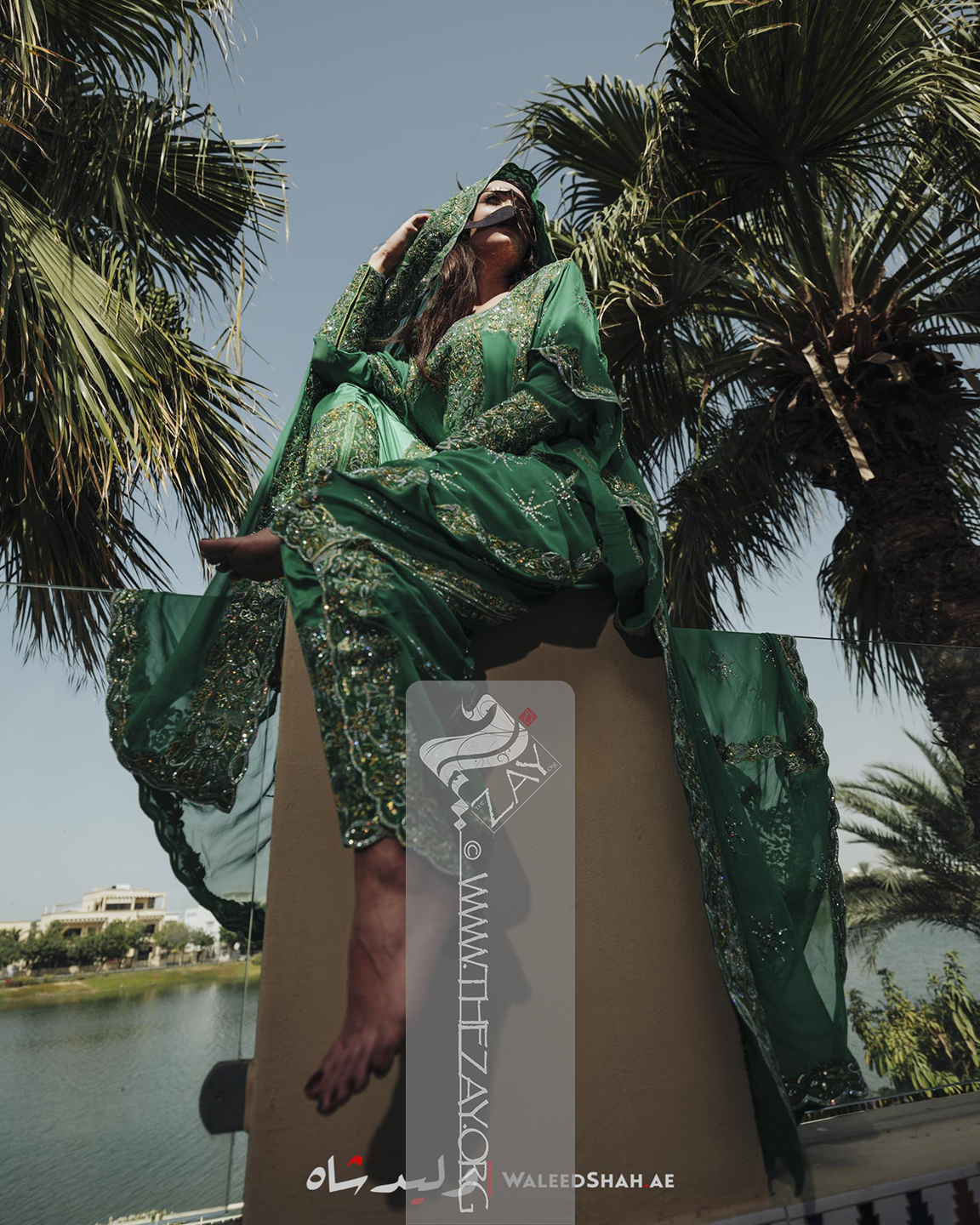Object Note This veil (
shaylah
Shaylah: (Colloquial Gulf Arabic), a length of fabric used as shawl, head cover or veil. Also known as (wigāyah) or (milfa’), generally made from sheer fabrics such as tulle (tūr), cotton gauze (wasmah
Wasmah: (Arabic: woad), is derived from the woad herb (wasmah) used to dye the cotton gauze black. It is mainly used for headcovers or veils and overgarments in most of the Arab gulf region.) (nidwah) or (Nīl), or silk chiffon (sarī).) is part of a three-piece ensemble, a combination overgarment tunic (
thawb_kandurah
Thawb_kandūrah: (colloquial, UAE), post-1990s the (Thawb_wa_kandūrah) ensemble of the eighties evolved where the overgarment (thawb) and tunic (kandūrah) became united at the neckline creating one outfit and inner tunic receding to act as lining.) (
ZI2018.50082 UAE) and undergarment (
sarwal
Ṣarwāl: (Farsi: shalvār; Synonym: salwar, shirwāl), trousers featuring tapering ankles and drawstring closure of Central Asian origin. They disseminated in the Indian subcontinent between c.1st-3rd century BCE. Although exact period of its arrival in the Arab world is disputed their widespread adoption is confirmed from the 12th century.
) (
ZI2018.50082b UAE).
Object History The complete
hinnah
ḥinnah: (Arabic: ḥinnāʾ), an Asian or African plant, the leaves are dried and made into a paste used to dye the hair and decorate parts of the body. (https://thezay.org/henna/) ceremony outfit was worn by Sheikhah Mariam bint Said bin Tahnoun Al Nahyan of Abu Dhabi on her
hinnah
ḥinnah: (Arabic: ḥinnāʾ), an Asian or African plant, the leaves are dried and made into a paste used to dye the hair and decorate parts of the body. (https://thezay.org/henna/) night (
laylat_al_hinnah
Laylat_Al_ḥinnah: (Arabic: laylat: night, ḥinnah: henna), a ceremonial ritual celebrated among family and close friends, carried out in the days before bride's wedding night. The hands and feet are decorated using henna paste as an integral part of the ceremony.) before her marriage to Sheikh Marwan bin Rashid Al Mualla of Umm al Quwain in 2010. It has only been worn on this one occasion. The outfit was designed, commissioned, and presented to Sheikha Mariam by her aunt Sheikhah Moza bint Hamdan al Nahyan.
Dr. Reem Tariq
Ṭariq: (Arabic; Synonym: tulle_bi_talli
Tūlle_bi_tallī: (French: Tulle – a city in France where fine material for veil was first made; Turkish: tel – wire; Synonym: tariq; talli; badla; khus_dozi ), series of small metal knots made on a woven net ground as embellishment. The term is commonly used in the North African Arab region specifically in Egypt.
; talli; badla; khus_dozi ), series of small metal knots made on a woven net ground as embellishment. The term is commonly used in the Levant Arab region specifically in Lebanon.
el Mutwalli
Dr. Reem Tariq
Ṭariq: (Arabic; Synonym: tulle_bi_talli
Tūlle_bi_tallī: (French: Tulle – a city in France where fine material for veil was first made; Turkish: tel – wire; Synonym: tariq; talli; badla; khus_dozi ), series of small metal knots made on a woven net ground as embellishment. The term is commonly used in the North African Arab region specifically in Egypt.
; talli; badla; khus_dozi ), series of small metal knots made on a woven net ground as embellishment. The term is commonly used in the Levant Arab region specifically in Lebanon.
el Mutwallī: Founder (CEO) of the Zay
Zay: (Arabic: costume, Pl. azyaā’), a set of clothes in a style typical of a particular country or historical period. Initiative, a public figure, speaker and author. An expert curator and consultant in Islamic art and architecture, interior design, historic costume, and UAE heritage. has known Sheikhah Mariam from birth, as she is a childhood friend of her mother Sheikha Fakhira bint Mubarak al Nahyan. We are fortunate to have a few of the young Sheikha’s gowns from her youth in The
Zay
Zay: (Arabic: costume, Pl. azyaā’), a set of clothes in a style typical of a particular country or historical period. collection.
Object Features Before the advent of oil wealth in the Gulf region, an Emirati
hinnah
ḥinnah: (Arabic: ḥinnāʾ), an Asian or African plant, the leaves are dried and made into a paste used to dye the hair and decorate parts of the body. (https://thezay.org/henna/) night called
laylat_al_hinnah
Laylat_Al_ḥinnah: (Arabic: laylat: night, ḥinnah: henna), a ceremonial ritual celebrated among family and close friends, carried out in the days before bride's wedding night. The hands and feet are decorated using henna paste as an integral part of the ceremony. had traditionally been a modest affair, attended mainly by close friends and family. The increase in wealth and the subsequent rise in social competitiveness, along with the use of the colour green for
hinnah
ḥinnah: (Arabic: ḥinnāʾ), an Asian or African plant, the leaves are dried and made into a paste used to dye the hair and decorate parts of the body. (https://thezay.org/henna/) ceremony clothes, appeared in the UAE from the 1980s imported from neighbouring countries. Not only did these new traditions lead to greater pageantry and displays of opulence, with music, food, and singing, but the number of attendees increased to include at times hundreds of people, now including more distant relatives and a wider circle of friends, colleagues, and acquaintances. The clothes that concealed the bride while sitting on a small raised stage, became the centrepiece of this desire to display as manifested in the pieces from this ensemble.
The entire
hinnah
ḥinnah: (Arabic: ḥinnāʾ), an Asian or African plant, the leaves are dried and made into a paste used to dye the hair and decorate parts of the body. (https://thezay.org/henna/) night ensemble is a reflection of the amalgamation of old and new, local and imported customs. While honouring the tradition of hiding the bride, more elaborate approaches were devised to highlight her during the ceremony.
Measuring three meters wide, this large veil
shaylah
Shaylah: (Colloquial Gulf Arabic), a length of fabric used as shawl, head cover or veil. Also known as (wigāyah) or (milfa’), generally made from sheer fabrics such as tulle (tūr), cotton gauze (wasmah
Wasmah: (Arabic: woad), is derived from the woad herb (wasmah) used to dye the cotton gauze black. It is mainly used for headcovers or veils and overgarments in most of the Arab gulf region.) (nidwah) or (Nīl), or silk chiffon (sarī). was designed to cover both the head and body. Traditionally, brides were not permitted to be seen for 40 days prior to their wedding, there for in keeping with tradition these larger veils were conceived in order to cover them in more recent elaborate
hinnah
ḥinnah: (Arabic: ḥinnāʾ), an Asian or African plant, the leaves are dried and made into a paste used to dye the hair and decorate parts of the body. (https://thezay.org/henna/) nights. During such a ceremony, the bride generally sits with her arms open and legs stretched out in front of her. The center point of the veil is draped over her head so that her torso and legs are completely covered, leaving only the soles of her feet and the palms of her hands visible. This allows the intricate henna designs to be displayed and admired by attendees, as they circle around her or as she is paraded among them.
The delicate silk chiffon is supported with an emerald green tulle (
tur
Tūr: (Arabised from French: tulle), refers to a net-like soft, fine silk, cotton, or nylon material, used for making veils and dresses. In colloquial Arabic the letter (L) is turned into (ra). ) around the edges, hand embroidered (
shak
Shak: (Arabic: to prick with a needle), Colloquially in the Arab gulf region it refers to the art of hand embellishing garments with beads.) with crystal beads and sequins, in floral and geometric motifs and festooned with iron-on Swarovski crystals of
rainbow
Rainbow: (English: rainbow). Colloquially, in the UAE the term denotes to rainbow lustre be it on crystal or metallic straw used for embellishing articles of dress. shimmer. The design reflects sun rays starting at the nape of the head spreading out in seven equally spaced lines reaching the edge to form one continuous embellished boarder along the hemline.
The garment is a testament to the sophisticated craftsmanship reached locally, when compared to work from the past century.




